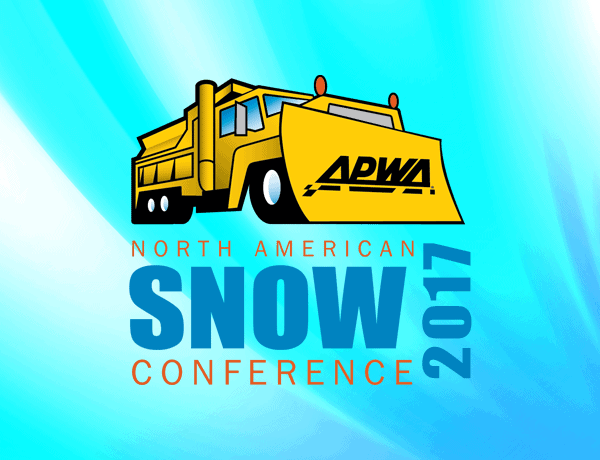Video
Emergencies and disasters can occur at any time. Public works departments are critical members of the emergency response team. As a public works leader, you and members of your team could be asked to step up and provide leadership at a moment's notice to unplanned disasters such as hurricanes, tornados, floods, wild fires, blizzards, ice storms, etc. Are you prepared to handle this type of situation? Attend this workshop and hear from public works leaders who have dealt with various unplanned emergencies. They'll share how having a mutual aid structure is extremely beneficial to response and recovery efforts. They'll also help prepare you for what to expect in this kind of unplanned challenge.Learning Objectives:Provide strong leadership during an unplanned emergency event.Leverage community and agency resources for timely and effective response.Examine how to develop and implement a mutual aid structure to provide support during emergencies.
Read MoreWinter maintenance managers have to make many decisions about the weather. This session makes it simple, focusing only on what matters, and provides you with a path toward using these…
Read MoreCase studies of best practices implemented by DOTs provide examples of practitioners proactively working to mitigate impacts of snow and ice control products.Key areas providing the greatest benefit are highlighted…
Read MoreThis session is designed to provide tools and insights to people responsible for managing pavement networks – roads, parking lots, and airfields. In this session, you will learn about the capabilities of the PAVERA""A Sustainment Management System and future development direction. You will hear from a city that is using PAVERA""A to direct its pavement management efforts and learn from their experiences. There will also be a presentation on a full implementation of PAVERA""A at the FBI Academy that will include the use of GIS mapping and mobile technologies to facilitate data collection in a secure area – as well as work planning data that is assisting the Academy in advocating for funding. Time will be provided during and after the session to interact with the speakers and get answers to your questions.Learning Objectives: Receive an introduction and development updates to the USACE PAVERa Sustainment Management SystemExplore how GIS mapping and mobile technologies can be used for data integration.Prioritize pavement maintenance based on measurable data.
Read MoreTwo maintenance workers for the City of Olympia wanted to build an automated valve-turner that would save money, increase efficiency, and reduce repetitive motion injuries. The lead worker took a risk on the idea and, with management support, he managed the team's workloads and schedules and gave the workers the resources to build and test their idea. Learn how the lead w5orker was able to manage concerns from other employees, keep the whole team motivated, and encourage creativity and innovation. In the end, these workers won the APWA Washington Chapter's 2016 award for ""Achieving Dreams through Empowered Public Works Teams.""Learning Objectives: Create an environment where maintenance workers are empowered to innovate.Manage workload and schedules so that corrective and preventive maintenance goals are met.Communicate successes and failures with management to gain support.
Read MoreWith changing weather patterns, winter maintenance practices are now being implemented in states where deicer chemicals and plowing have not been heavily used in the past. In recent years, the Southeast portion of the United States has seen greater need for information on how deicer chemicals work, the benefits of a winter maintenance plan, and how to deal with increasing public expectations on how roads should be maintained during snow and ice events. This session will be delivered by two top winter maintenance professionals who will share their expertise and stories to provide advice and cutting-edge information for those less experienced in winter operations.Learning Objectives:Recognize the importance of having a winter maintenance plan.Obtain information on best practices for deicing chemicals and other snow and ice treatments and technologies.Establish a communication plan to be able to convey more information to the driving public during a snow and ice event.
Read MoreThe Canadian Prairies endured a catastrophic spring and summer in 2016. A wildfire in early May prompted a month-long evacuation of 88,000 people living in Fort McMurray. The fire melted water valves in affected homes, which filled basements, draining ash and gravel into the wastewater collection system. They also had to deal with concerns about toxicity and habitat preservation. In July, an oil spill into the North Saskatchewan River resulted in a shut-down of the water treatment plant intakes to protect the potable water supply from hydrocarbon contamination. Large-scale temporary pipelines and pumps sourced from hundreds of miles away provided water supplies.Learning Objectives:Examine their own critical infrastructure and plan for ""what if"" scenarios.Explore the possible unanticipated impacts from disasters on water and wastewater infrastructure.Assess assess critical risk factors in water and wastewater infrastructure and develop plans for recovery of compromised systems.
Read MoreIn 2014, the Ontario Ministry of Transportation launched a multi-year initiative to build public works emergency management capacity for a jurisdiction of almost 14 million people covering 386,000 square miles. We'll discuss the building of a province-wide debris management framework, an innovative public-private public works surge capacity system, the use of unmanned aerial vehicles (UAVs) for rapid damage assessment, and the development of multi-jurisdictional incident support systems.Learning Objectives: Initiate public works emergency management capacity at the local and state/province levels.Provide examples of techniques to build stakeholder support for collaborative capacity building projects.Determine how government organizations can work with each other and with the private sector to enhance state/province and local public works emergency management capacity.
Read MoreMany organizations split crews into two, 12 hour shifts during winter operations and some run as many as 16 hours or remain on duty until the event is over. Operator…
Read MoreEver think that the public service departments (i.e. Police and Fire) get all the glory, but what people don’t realize is without YOU, they are not able to do their jobs? If that pothole is not filled, if that pipe is failed, if that road is impassible after a storm, if the fire is in the woods and the fire department can’t get to it without YOUR help, if the traffic signals are not operational, if the stop sign is down, if that police car is in the shopa.and the list goes ona.who is called to come to the rescue? We need to change our mindsets, we need to have our public service departments advocating for usa.but how do we get them to do that? They dramatize how people will DIE if they don’t have that new fire truck or new police station to service the publica.well, we can be just as dramatic a..use them to help your cause. Come to our interactive session to creatively think of ways to be heard and get what you need.Learning Objectives:Persuade the public service departments to be on your side.Advocate your cause with a little help from your public service departments.Initiate creative ways to band together with your public service departments.
Read More
